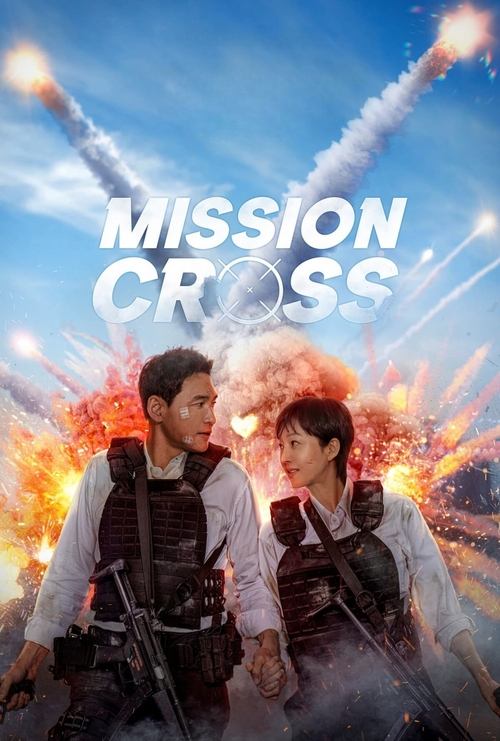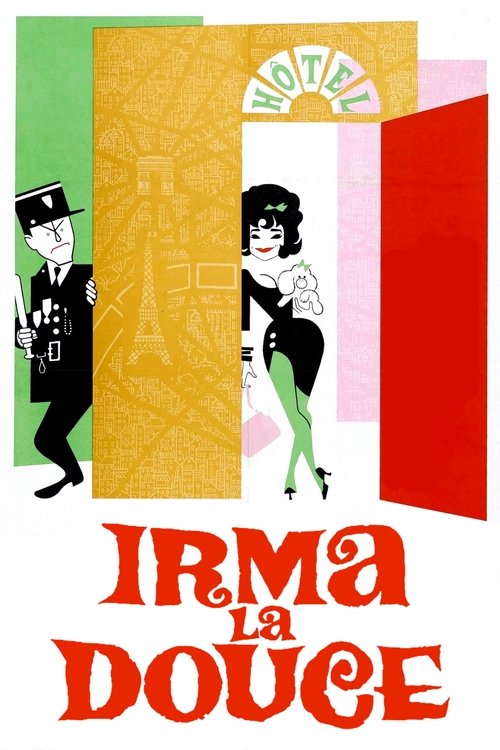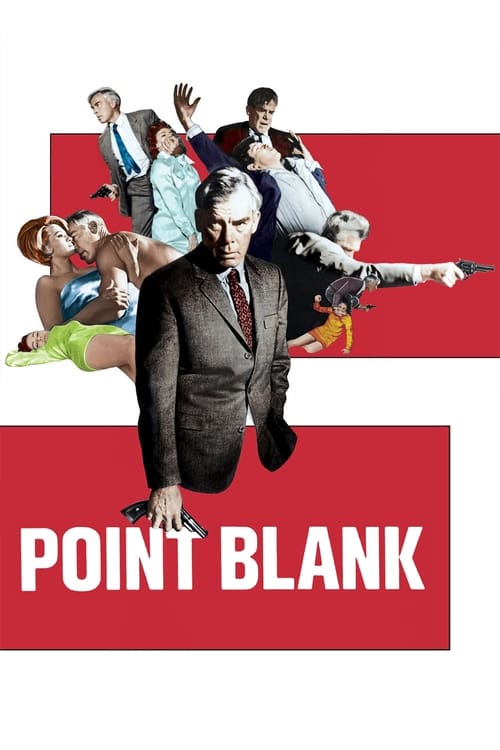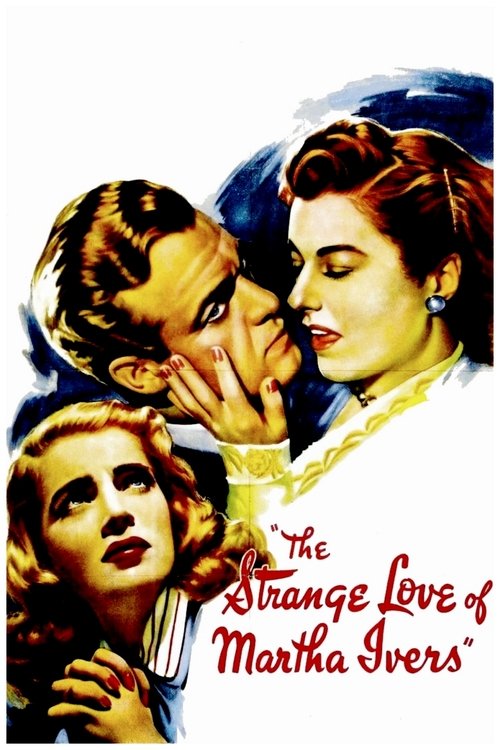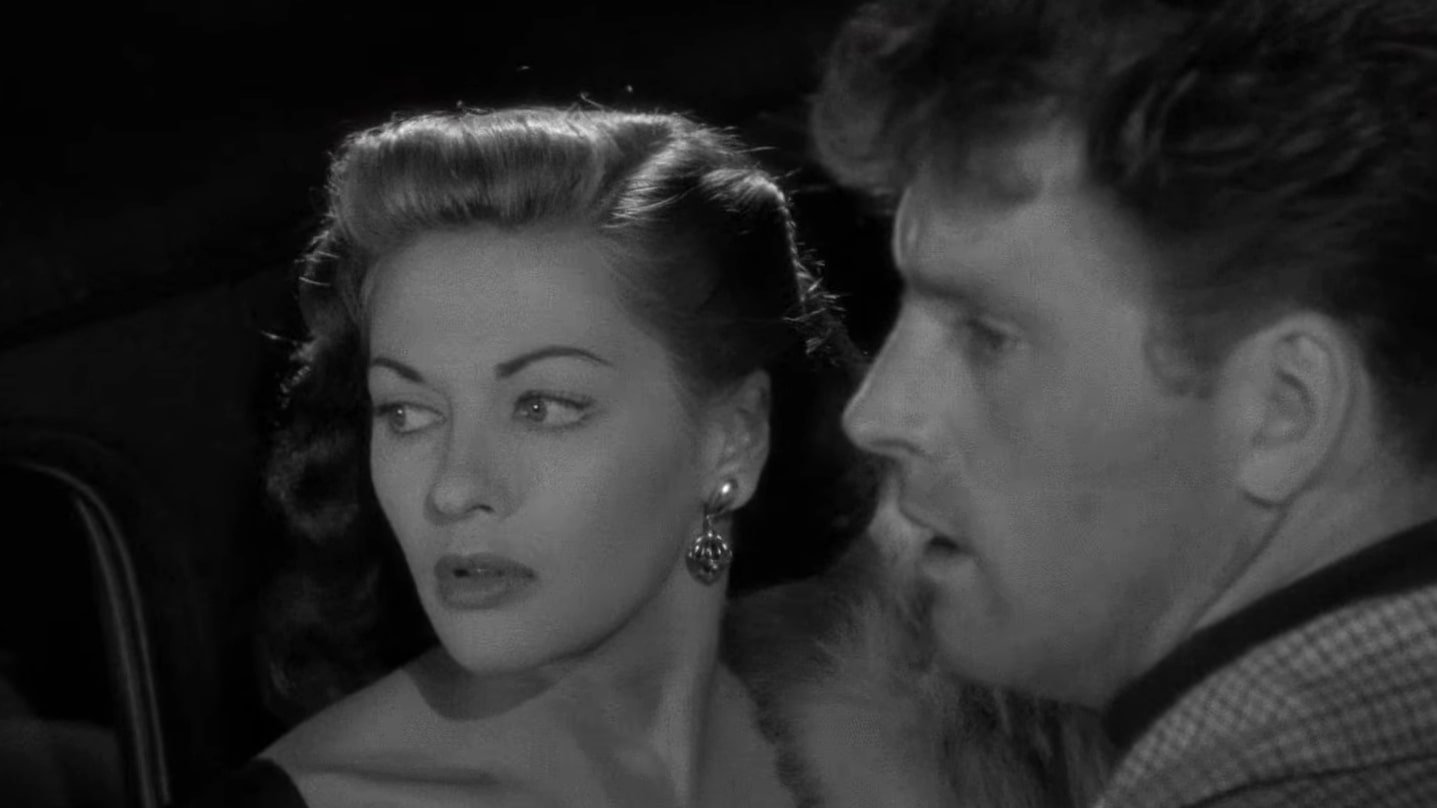
1949
Criss Cross
Crime, Thriller
8.0
User Score
169 Votes
Status
Released
Language
en
Budget
$0
Production
Universal International Pictures
Overview
An armored-car guard must join a robbery after being caught with his ex-wife by her gangster husband.
Review
felixxx999
10.0
from filmnoiroftheweek.com
I always find the music in film noir interesting. Unlike self-conscious noirs like Farewell, My Lovely and Body Heat, most noir soundtracks are orchestral – not jazz. The slow wailing saxophone over a Robert Mitchum voice-over can be found in noir parodies like the Guy Noir segments of A Prairie Home Companion. Strangely enough, that kind of music track is never actually heard in classic film noir. With some exceptions (Odds Against Tomorrow, for example) jazz and other forms of popular American music is usually heard only when it's performed on screen and not in the background or over opening credits.
Music performed on screen in noir can be put into two categories. First, there's the tunes belted out by sexy femme fatales in glamorous night clubs. Often the songs, by the likes of Rita Hayworth and Liz Scott, are upbeat and don't have much to do with the film except that they reinforce the fact that the woman are sexy – the Jessica Rabbit effect. Then there's music played by bands in seedy night clubs and bars that are integrated into the context of the film. Instead of being somber and slow the music from the second category is pounding and disorientating – totally fitting the mood of the film. Watch D.O.A. for an example. The most effective music in the film (right behind the bombastic but wonderful score by Dimitri Tiomkin) is a performance in a San Francisco jazz club by the band the Fisherman – an all-black group that jams with so much force it’s exhausting to watch. Edmund O’Brien –after following partiers from his hotel to the club- is so annoyed by the music (and from a jealous husband’s evil eye) it causes him to leave his fellow drinkers and hit the bar alone. That opens up a golden opportunity for villains to then slip him a glow-in-the-dark Mickey Finn.
When Kansas goes undercover in Phantom Lady she’s eventually lead to a creepy drummer in a night club show. The music at the show is typical of a 1940s film. The Carmen-Miranda riff is stagy and bland. Things get better though. After the show drummer Cliff leads Kansas to a seedy jazz club to hear some real music. The scene that follows is both sexy and even a bit grotesque. The drum beats build like a sexual climax as “hep kitten” Kansas watches a sweaty Elisha Cook Jr. go all out on the drums. Director Robert Siodmak’s use of the music makes it clear that Kansas is putting herself in real danger. An assault or some sort of violence is almost expected later in the night after witnessing Cliff’s drum solo.
Siodmak’s best use of music, however, was in 1949’s Criss Cross when Steve and Anna reunite. More on that scene in a minute.
Criss Cross begins with a long aerial shot of Los Angeles over the chief composer of film noir Miklós Rózsa's noir score. The camera finally stops and focuses on two lovers in a parking lot startled after being caught in an embrace by passing headlights. Steve Thompson (Burt Lancaster) and his ex-wife Anna Dundee (Yvonne De Carlo) are planning to double cross her husband Gangster Slim Dundee (Dan Duryea) after a planned armored car heist the next day.
(About the casting: I feel Lancaster's performance as Steve "the prize sucker of all time" is a role only he could play although some will tell you he's miscast. Gary George's Noir of the Week on Criss Cross states, "Shelly Winters was also a strong contender for the (Anna) role... however, I will remain eternally grateful to the Gods of casting that Yvonne De Carlo landed the role." He both disses Winters and flatters De Carlo at the same time!)
The elaborate set up by the couple also involves pulling one over Steve’s cop friend (Stephen McNally) in addition to the gangsters. The complicated job looks like it will fail from the start. The next morning, as Steve (the inside man) drives the armored car to the heist location, he flashes back - remembering the events leading up to the crime in progress.
Steve has been away from his home in Los Angeles for a year. After his divorce from Anna – a short marriage of less than a year – Steve traveled around the country doing odd jobs by day and no doubt drinking heavily at night. After a year away he makes it home after hopping off the trolley car. Steve trots up the street on Bunker Hill to his mother's house right on the trolley line. He says hi to his dog (who doesn't seem all that interested in seeing him) and immediately goes to his and Anna's old hangout. Steve is full of contradictions. He'll tell anyone that will listen that he hasn't returned home to see Anna again. He says he wants nothing to do with her. Yet, the first thing he does is go to the old club to find her. Steve acts like this through the whole movie – always doing the opposite of what's expected of him. He's a danger to himself - even more than Anna - the film's possible femme fatale - and Slim.
Steve's old hangout is a local bar. It's narrow, dark and anchored by a local barfly and a rotund bartender (Percy Helton). The outer area opens up to a night club. It's not all that swanky – though certainly an upgrade to the bar area. For the neighborhood patrons it's a sophisticated and classy place to be seen in. That's where Steve sees Anna again. The scene that follows mixes music and image perfectly. It's electric.
With an impressive tune played by Esy Morales' Rumba Band, you see the world through Steve's eyes. And his world revolves around Anna. As she's dances to the pounding rumba you can see why Steve will do anything to get her (including robbing a bank). Sharp eyes will notice that she's dancing with the (mercifully silent) Tony Curtis. The scene is remarkable because the band is so good and the music syncs with Steve's reaction to Anna.
Siodmak shoots the film from Steve's perspective (like a Raymond Chandler novel). That element makes it unlike the other Siodmak/Lancaster collaboration The Killers which is told in a Citizen-Kane type flashback. This point of view makes it hard to see Anna's faults even after Steve finds out (in a heartbreaking scene) that she'drun off to marry Slim. Siodmak uses the first person perspective effectively throughout the film especially at the end of the movie when Steve's recovering from a bullet wound and broken arm. He – in pain and just waking in a hospital bed – must play a game of cat and mouse with a man that may or may not be one of Slim's henchmen. Steve -caught in his own twisted deception- tries to both evade the cops and Slim's suspicions while trapped in the bed. The suspense doesn't get any less intense when Steve's dragged from his bed to a boat house where he has a fatal final confrontation with Anna and Slim.
Special mention should be made about the bad guys in Criss Cross. Duryea is a perfect contrast to Lancaster. He's not just “slim” to Lancaster's beefiness. When Slim catches Steve with Anna in a key scene leading up to the heist Duryea's sporting an all black suit with a white tie while Lancaster is wearing a white t-shirt over light colored pants creating a perfect contrast. A suit – no matter how sharp – doesn't make a performance however. Duryea – the ultimate noir pimp and small-time criminal -is a key element in this unique love triangle. He fits the suit well and gives an appropriately slimy performance.
Praise for the cast and almost universal acclaim for the film can be found by reading criticism of film noir. Tom Flinn in his article in Kings of the Bs applauds the character portrayals including “Percy Helton... with a voice like wood rasp; Tom Pedi, Slim's henchman Vincent, who delivers his dialogue with a greedy verve (“That's the ticket”); John Doucette, another of the gang, with a dour voice to match his somber personality; and Alan Napier, Finchley, the alcoholic mastermind of the big heist.”
In A Panorama of American Film Noir (1941-1953)Criss Cross is called the summit of Siodmak's American career stating, “ To be sure, it never attains the unalloyed ferocity of certain scenes in The Killers, but the work is much smoother, more profound, more truly distressing.”
Unlike Siodmak's Phantom Lady, Criss Cross avoids the dreaded “happy ending.” We're never sure if Anna – who not only marries Steve's rival but also takes the robbery money – is shallow minded, a victim or just a conniving classic femme fatale. Criss Cross doesn't answer the question. Instead the ending bluntly snuffs all three lives before anything can be resolved. Like Esy Morales' Rumba Band's performance earlier in the film – it rocks you.
Read More 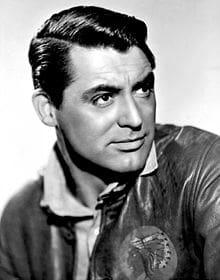
John Chard
9.0
I should have been a better friend. I shoulda stopped you.
Criss Cross is directed by Robert Siodmak and adapted by Daniel Fuchs from Don Tracy's novel. It stars Burt Lancaster, Yvonne de Carlo, Dan Duryea and Stephen McNally. Music is scored by Miklós Rózsa and cinematography is by Franz Planer.
Steve Thompson (Lancaster) and old flame Anna (de Carlo) begin to rekindle their love, much to the dismay of those closest to Steve. She's now unhappily married to mobster Slim Dundee (Duryea), they plan to run away together but Slim is apparently getting wise to their affair. When the two are caught together by Slim, Steve quickly concocts a story that they were plotting an armoured-truck robbery that he wants Dundee to be involved in. Slim notes it's near impossible, but with Steve working for the armoured-truck company it opens the way for inside man possibilities. It deviates suspicion on the lovers, but this is only the start of their problems, for nothing is as it seems.
Criss Cross has come to be a favourite of many a film noir purist, a picture often held forward as one of the shining lights of the 1940's noir universe. But it so easily could have been so different given that the film's original producer, Mark Hellinger, suddenly died of a heart attack. The film under Hellinger's guidance was to be based around a racetrack heist, but with Hellinger's passing the project dropped into limbo and was sold off to Universal along with Lancaster and Siodmak as part of the deal. Although Lancaster was unhappy with the rewritten plot, his relationship with Siodmak had already been cemented three years earlier when they made The Killers, another of film noir's greatest triumphs. For Criss Cross, Siodmak, Fuchs and producer Michael Kraike took Tracy's novel and combined it with elements of The Killers (an Ernest Hemmingway short story). Ava Gardner wasn't on hand to reprise her Killers femme fatale performance, while Shelley Winters was considered but not offered the role that eventually went to de Carlo, who had worked with Lancaster previously on tough as nails prison movie, Brute Force (1947). Rounding out the link between the three protagonists comes with Duryea, he and de Carlo had made Black Bart & River Lady in 1948.
Alls well that ends well, figuratively speaking, because Criss Cross is a superb movie, one that begs to be re-watched whenever possible. All the classic traits of film noir are evident, both technically and narratively. The film begins with a portentous swirl of music from Rózsa, which in turn leads us into a dramatic aerial view of night time Los Angeles. From there we descend towards a parking lot and become witness to an illicit romance between Steve & Anna. At the film's finale we again will be the only witness' to their coupling, only this time it has a kicker, out shot being that Criss Cross is bookended by sheer brilliance. Obsession, betrayal and inescapable fate pervade the narrative from the moment we the audience are clued in to the history of Steve, Anna and Slim. As the tale unfolds in flashback there is a constant sense of feverish doom lingering in the air, aided considerably by Planer's evocative lighting set-ups and Siodmak's wonderful gliding camera and clinical framing compositions of the characters. Even the perky action high point of the robbery comes laced with smoggy gloom, the chaotic sequence only serving as a precursor to the present, where a hospital and a mirror shift us tonally back to the world of unease. And then the finale, one of the most bleakest, and therefore essential, ending in film noir history.
Cast are excellent, Lancaster, all square jawed and square shouldered, plays obsessed loser better than most, thanks in no small part to Siodmak's direction of him. Duryea does what he does best, playing a villain with oily verve and smirky menace, while de Carlo looks great and offers up a nice blend of sweet and rough, a different kind of femme fatale, the actress earning her acting stripes during "that" finale. In the main support slot, McNally impacts well with what he's given to do, and there's good value in the criminal ranks where Alan Napier lurks as the mastermind behind the robbery. Look out, too, for Tony Curtis, who is seen in a cameo dancing seductively with de Carlo at the Round-Up Bar. Also worth mentioning are the Los Angeles locales used for the shoot, mostly at night we get Bunker Hill, Angels Flight and Union Station. It's sad to report that Bunker Hill, a favourite spot for noir directors, was raised to the ground in the 60's
An obvious bedfellow to The Killers for sure, but even on its own terms it's essential film noir viewing for those of that persuasion. 9/10
Read More 